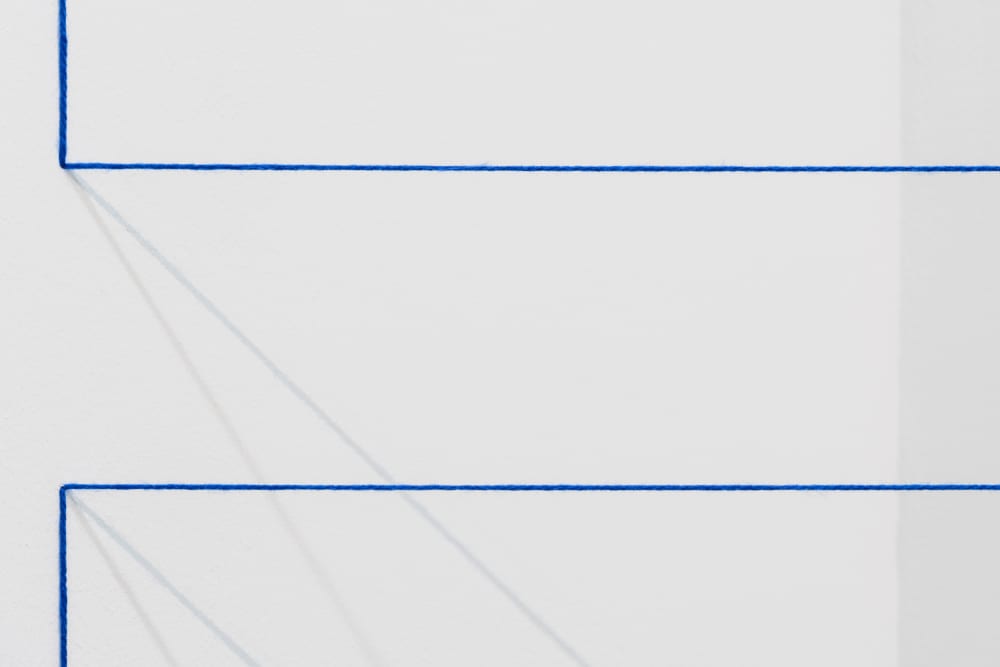FRED SANDBACK
-
介绍
This summer, Galerie Thomas Schulte is pleased to present an installation by the US-American artist Fred Sandback. Sandback’s “broken triangle” has been specially configured for the gallery’s 29-foot high Corner Space, utilizing only a few lines of stretched acrylic yarn to achieve one of Sandback’s unmistakable spatial interventions.
Fred Sandback’s expansive oeuvre of linear sculptures, dating back to the late 1960s, employs minimal means to achieve complex spatial effects, synthesizing artwork, space, and viewer. His approach to sculpture was fundamentally rooted in drawing, exploring the elemental themes of spatial experience. He utilized the simplest techniques: physical lines drawn in space form permeable sculptures that have no inside nor outside; they do not form a body, but seemingly make their space and the viewers’ space tangible.
For Sandback and his contemporaries who conceived and developed Minimalist sculpture in the 1960s, drawing was not a mere instrument for study, but a vehicle to create something analogous to sculpture. Thus, it became a catalyst through which to challenge the scope of sculptural interventions possible in a room. Much like Anthony McCall’s iconic light drawings from the early 1970s, such as A Line Describing a Cone (1973), Sandback’s sculptures employ lines to create almost intangible artworks. They incorporate not only their immediate architectural surroundings, but also us—the viewers—within their three-dimensional purview. These objects define planes, volumes, and architectural spaces, while simultaneously transforming the room into a new spatial domain for viewers as they move around it: a temporal aspect. In the artist’s own words, “My work doesn’t take over a space, but rather coexists with it.”
On display in the gallery’s Corner Space is a work originally conceived in 1999. Untitled (Sculptural Study, Broken Triangle, Lannan Foundation, Santa Fe) is a corner-specific artwork composed of two intersecting triangles, taking advantage of the room’s four corners to form an isosceles-like shape leaning into the space’s depth. The triangle’s “brokenness” may be attributed to the simple yet intricate interweaving of the “complete” black triangle and “incomplete” orange triangular form, each stopping short of their final vertices, never quite meeting the other in the corners of the room. -
作品
-
安装图示
-
Inquire about works by FRED SANDBACK

-
视频
-
参展艺术家




